Acer Aspire 7 (A715-42G) review – interesting hardware choices, which work surprisingly well together
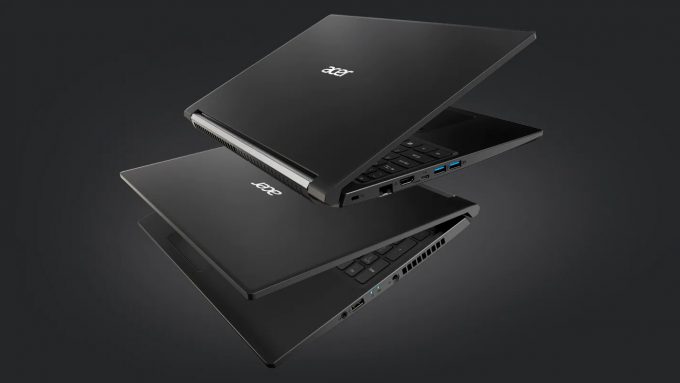 Acer is amongst the top brands on the market. However, they still stay behind the likes of Lenovo, HP, and Dell when it comes to market share, so they need to step their game up. Recently, they did well to improve their Predator gaming series to a new fresh look. Then, the Swift and Spin series followed, but as with the other manufacturers, there is one thing that sells best – budget laptops. As such, the Aspire subbrand is arguably the most important one in Acer’s portfolio.
Acer is amongst the top brands on the market. However, they still stay behind the likes of Lenovo, HP, and Dell when it comes to market share, so they need to step their game up. Recently, they did well to improve their Predator gaming series to a new fresh look. Then, the Swift and Spin series followed, but as with the other manufacturers, there is one thing that sells best – budget laptops. As such, the Aspire subbrand is arguably the most important one in Acer’s portfolio.
But what if you want a budget notebook that has the power to perform more than just daily tasks. You might want to play a game or two, or you have some productivity tasks on the line. Well, the Aspire 7 (A715-42G) is here and it has something interesting for you. One of the key selling points here is the NVIDIA GeForce GTX 1650 graphics card, which is still viable in 2021 and gives you the opportunity to play every AAA title out there, albeit with reduced eye candy. But what about the processor? Well, instead of the power-hungry 45W solutions out there, Acer has chosen the energy-efficient Ryzen 5 5500U, and Ryzen 7 5700U. They are both Zen 2 chips disguised in the Ryzen 5000U series paint, but they offer quite a lot of performance.
It will be pretty interesting to see how well will the dedicated GPU work with the low-voltage CPUs, but we are pretty confident that the Zen 2 architecture has all it takes to provide great productivity, especially with proper cooling.
You can check the prices and configurations in our Specs System: https://laptopmedia.com/series/acer-aspire-7-a715-42g/
Contents
Video Review
Specs Sheet
- HDD/SSD
- up to 2000GB SSD
- M.2 Slot
- 1x M.2 NVMe slot See photo
- RAM
- up to 64GB
- OS
- Windows 11 Home, Windows 11 Pro, No OS, Windows 10 Home
- Battery
- 48Wh, 3-cell
- Body material
- Plastic / Polycarbonate
- Dimensions
- 363.4 x 254.5 x 22.9 mm (14.31" x 10.02" x 0.90")
- Weight
- 2.15 kg (4.7 lbs)
- Ports and connectivity
- 1x USB Type-A
- 2.0
- 1x USB Type-A
- 3.2 Gen 1 (5 Gbps)
- 1x USB Type-A
- 3.2 Gen 1 (5 Gbps), Sleep and Charge
- 1x USB Type-C
- 3.2 Gen 1 (5 Gbps)
- HDMI
- Ethernet LAN
- 10, 100, 1000 Mbit/s
- Wi-Fi
- 802.11ax
- Bluetooth
- 5.1
- Audio jack
- 3.5mm Combo Jack
- Features
- Fingerprint reader
- optional
- Web camera
- HD
- Backlit keyboard
- optional
- Microphone
- 2 Microphones
- Speakers
- 2 Speakers
- Optical drive
- Security Lock slot
All Acer Aspire 7 (A715-42G) configurations
What’s in the box?
Inside the package, you will see some paper manuals, as well as a 135W power brick.
Design and construction
Well, this laptop’s casual business looks provide a decent foreground for a lot of people. Honestly, we really like what Acer did visually, and the fact that the finish is pretty stain-resistant. Now, in terms of measurements, we have pretty average values of 22.9mm of thickness, and 2.15 kg of weight. Also, its body is surprisingly rigid, despite the plastic material being used here.
On the other hand, the lid is pretty bendy, but it thankfully opens easily with a single hand. This is further aided by the hinges, which are placed on the far two ends of the chassis. In this case, the design looks a bit dated with a pronounced chin and forehead, but at least the side bezels are thin enough. Also, you get an HD camera above the matte display, which is good for the age we live in.
Next in line, we have the keyboard. It is backlit, which is great for night-time users. Also, it has a NumberPad section, for quick calculations of the odds of the next “El Classico” game. Other than that, the unit itself is pretty average, with a somewhat short key travel, and good feedback. Unsurprisingly, we saw some deck flex, but it was nothing dramatic in our view.
If you look further down, you will see the touchpad, which houses a fingerprint reader. Thankfully, the area around the sensor is actually usable, unlike many other notebooks out there. So, the touchpad itself has smooth gliding, thanks to the glass surface, but the tracking and latency are far from the best in the class.
Now, turn the laptop upside down, and you will see the speaker cutouts, as well as the ventilation grills, which are so big, that you can see the entire cooling solution through them. Respectively, the hot air escapes unimpeded from the back and from the right side of the machine.
Ports
On the left side of the notebook, there is a security lock, followed by an RJ-45 connector, an HDMI connector, a USB Type-C 3.2 (Gen. 1) port, and two USB Type-A 3.2 (Gen. 1) ports. Then, on the right, you will see the power plug, a USB Type-A 2.0 port, predating the Roman Empire, and an audio jack.
Disassembly, upgrade options and maintenance
To get this notebook disassembled, you will need to remove the bottom panel. This happens by undoing 13 Phillips-head screws and prying the panel with a plastic tool.
The battery pack has a capacity of 50.3Wh, and it is the first thing you need to unplug before you proceed with the teardown.
Thankfully, there are two RAM SODIMM slots, which support up to 32GB of DDR4 memory in dual-channel mode. Storage-wise, there is one M.2 PCIe x4 slot.
Given the fact that this laptop has a low-voltage processor, we are happy to see that the cooling solution consists of three heat pipes. Two of them are common for the CPU and the GPU, with the third one dedicated to the graphics card. Also, you can see that the VRMs and the graphics memory are also actively cooled. Interestingly, we see a very long heat spreader, supported by a smaller one, which only has the GPU heat pipe connected to it.
Display quality
Acer Aspire 7 (A715-42G) in our configuration is equipped with a Full HD IPS panel with a model number AUO B156HAN02.1 (AUODF87). Its diagonal is 15.6″ (39.62 cm), and the resolution 1920 х 1080 pixels. The screen ratio is 16:9, and we are looking at a pixel density of – 142 ppi, and a pitch of 0.18 х 0.18 mm. The screen turns into Retina when viewed at distance equal to or greater than 60cm (24″) (from this distance one’s eye stops differentiating the separate pixels, and it is normal for looking at a laptop).

Viewing angles are excellent. We offer images at 45° to evaluate image quality.

The measured maximum brightness of 253 nits in the middle of the screen and 252 nits as an average for the whole area, with a maximum deviation of 16%. The Correlated Color Temperature on a white screen is 6530K – practically matching the sRGB standard of 6500K.
In the illustration below you can see how the display performs from a uniformity perspective. In other words, the leakage of light from the light source.
Values of dE2000 over 4.0 should not occur, and this parameter is one of the first you should check if you intend to use the laptop for color-sensitive work. The contrast ratio is good – 1100:1.
To make sure we are on the same page, we would like to give you a little introduction to the sRGB color gamut and the Adobe RGB. To start, there’s the CIE 1976 Uniform Chromaticity Diagram that represents the visible specter of colors by the human eye, giving you a better perception of the color gamut coverage and the color accuracy.
Inside the black triangle, you will see the standard color gamut (sRGB) that is being used by millions of people on HDTV and the web. As for the Adobe RGB, this is used in professional cameras, monitors, etc for printing. Basically, colors inside the black triangle are used by everyone and this is the essential part of the color quality and color accuracy of a mainstream notebook.
Still, we’ve included other color spaces like the famous DCI-P3 standard used by movie studios, as well as the digital UHD Rec.2020 standard. Rec.2020, however, is still a thing of the future and it’s difficult for today’s displays to cover that well. We’ve also included the so-called Michael Pointer gamut, or Pointer’s gamut, which represents the colors that naturally occur around us every day.
The yellow dotted line shows Acer Aspire 7 (A715-42G)’s color gamut coverage.
Its display covers 51% of the sRGB/ITU-R BT.709 (web/HDTV standard) in CIE1976.
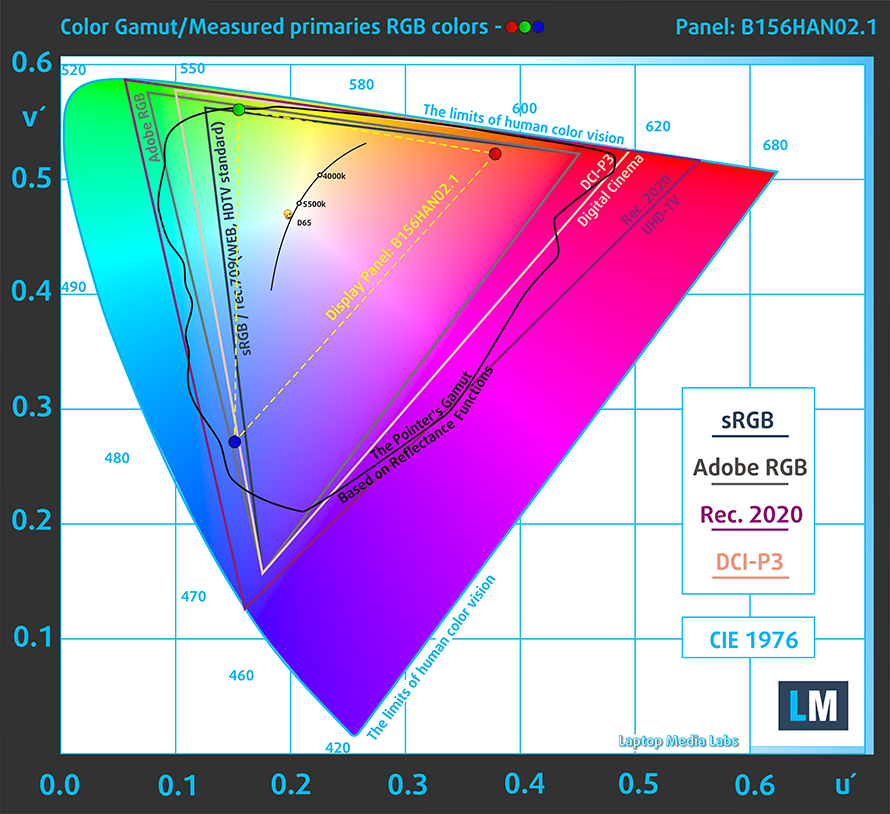
Our “Design and Gaming” profile delivers optimal color temperature (6500K) at 140 cd/m2 luminance and sRGB gamma mode.
We tested the accuracy of the display with 24 commonly used colors like light and dark human skin, blue sky, green grass, orange, etc. You can check out the results at factory condition and also, with the “Design and Gaming” profile.
Below you can compare the scores of Acer Aspire 7 (A715-42G) with the default settings (left), and with the “Gaming and Web design” profile (right).
The next figure shows how well the display is able to reproduce really dark parts of an image, which is essential when watching movies or playing games in low ambient light.
The left side of the image represents the display with stock settings, while the right one is with the “Gaming and Web Design” profile activated. On the horizontal axis, you will find the grayscale, and on the vertical axis – the luminance of the display. On the two graphs below you can easily check for yourself how your display handles the darkest nuances but keep in mind that this also depends on the settings of your current display, the calibration, the viewing angle, and the surrounding light conditions.
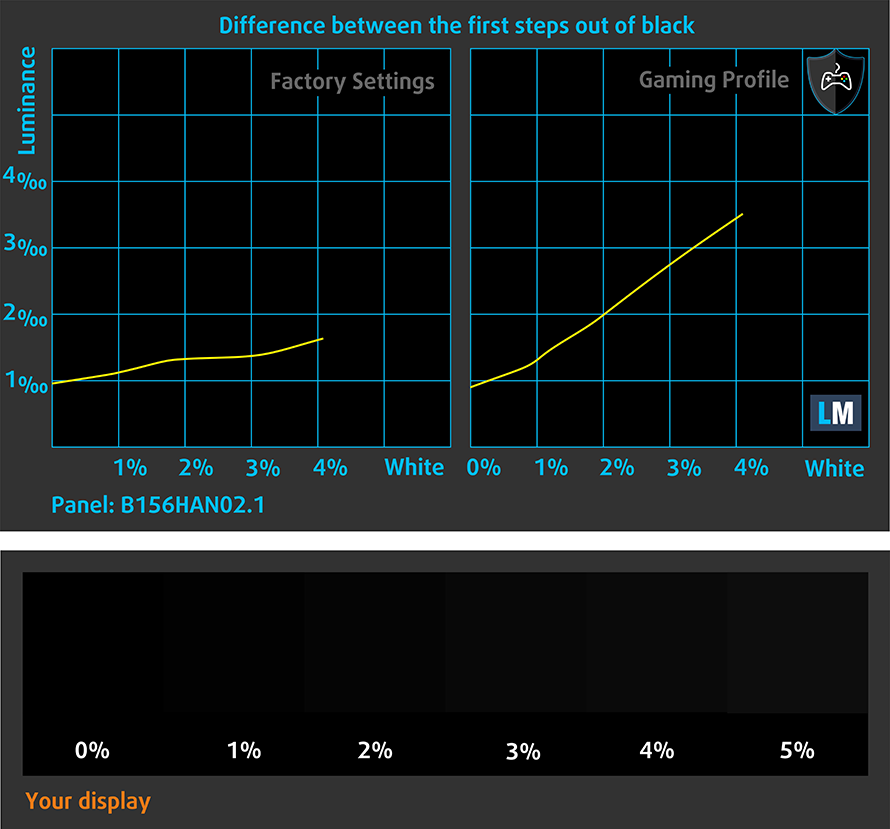
Response time (Gaming capabilities)
We test the reaction time of the pixels with the usual “black-to-white” and “white-to-black” method from 10% to 90% and vice versa.
We recorded Fall Time + Rise Time = 26 ms.
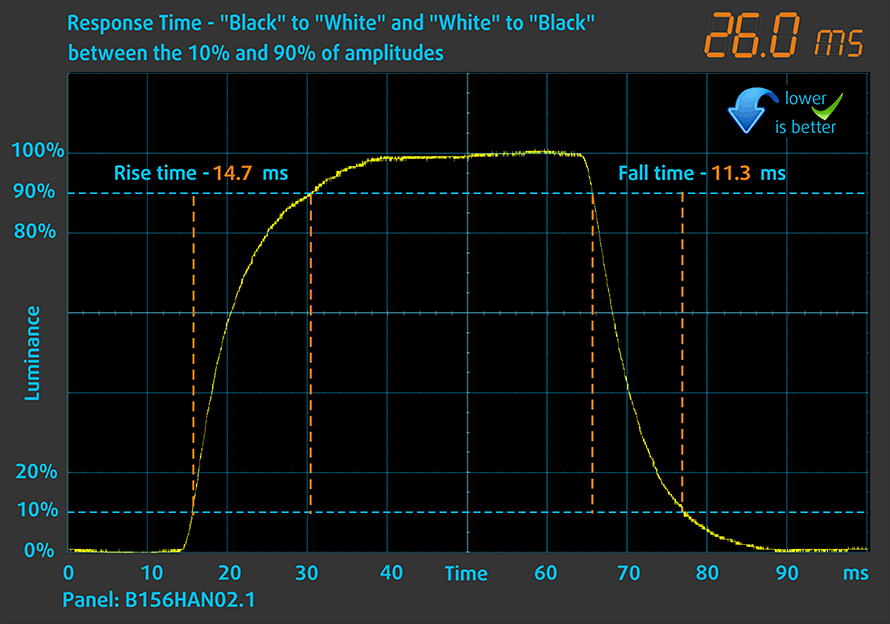
After that, we test the reaction time of the pixels with the usual “Gray-to-Gray” method from 50% White to 80% White and vice versa between 10% and 90% of the amplitude.
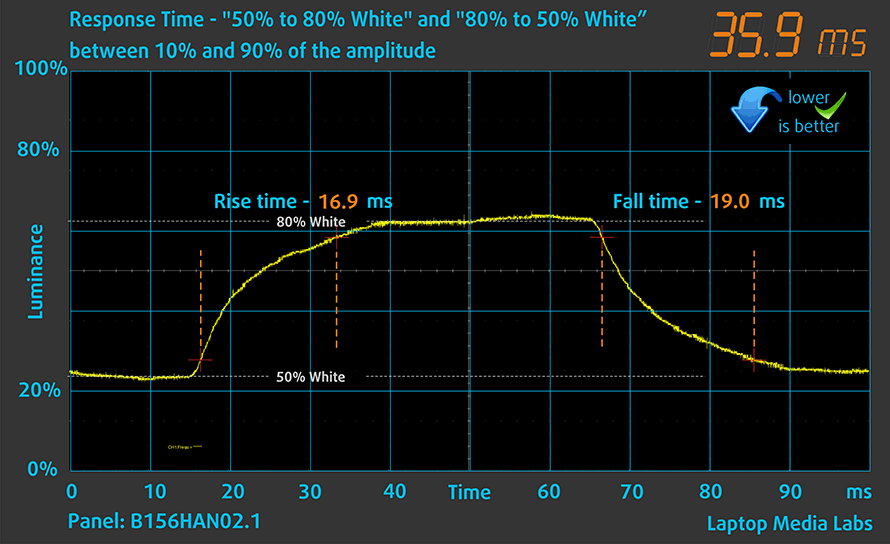
PWM (Screen flickering)
Pulse-width modulation (PWM) is an easy way to control monitor brightness. When you lower the brightness, the light intensity of the backlight is not lowered, but instead turned off and on by the electronics with a frequency indistinguishable to the human eye. In these light impulses, the light/no-light time ratio varies, while brightness remains unchanged, which is harmful to your eyes. You can read more about that in our dedicated article on PWM.
Acer Aspire 7 (A715-42G)’s display doesn’t use PWM to adjust its brightness levels at any point. This makes it comfortable for use during long work periods, without harming your eyes in this aspect.

Blue light emissions
Installing our Health-Guard profile not only eliminates PWM but also reduces the harmful Blue Light emissions while keeping the colors of the screen perceptually accurate. If you’re not familiar with the Blue light, the TL;DR version is – emissions that negatively affect your eyes, skin, and your whole body. You can find more information about that in our dedicated article on Blue Light.
Buy our profiles
Since our profiles are tailored for each display model, this article and its respective profile package are meant for Acer Aspire 7 (A715-42G) configurations with 15.6″ FHD IPS AUO B156HAN02.1 (AUODF87).
*Should you have problems with downloading the purchased file, try using a different browser to open the link you’ll receive via e-mail. If the download target is a .php file instead of an archive, change the file extension to .zip or contact us at [email protected].
Read more about the profiles HERE.
In addition to receiving efficient and health-friendly profiles, by buying LaptopMedia's products you also support the development of our labs, where we test devices in order to produce the most objective reviews possible.

Office Work
Office Work should be used mostly by users who spend most of the time looking at pieces of text, tables or just surfing. This profile aims to deliver better distinctness and clarity by keeping a flat gamma curve (2.20), native color temperature and perceptually accurate colors.

Design and Gaming
This profile is aimed at designers who work with colors professionally, and for games and movies as well. Design and Gaming takes display panels to their limits, making them as accurate as possible in the sRGB IEC61966-2-1 standard for Web and HDTV, at white point D65.

Health-Guard
Health-Guard eliminates the harmful Pulse-Width Modulation (PWM) and reduces the negative Blue Light which affects our eyes and body. Since it’s custom tailored for every panel, it manages to keep the colors perceptually accurate. Health-Guard simulates paper so the pressure on the eyes is greatly reduced.
Get all 3 profiles with 33% discount
Sound
Acer Aspire 7 (A715-42G)’s speakers produce a sound with pretty low maximum volume and deviations across the entire frequency range.

Drivers
All of the drivers and utilities for this notebook can be downloaded from here: https://www.acer.com/ac/en/ID/content/support-product/8851?b=1
Battery
Now, we conduct the battery tests with Windows Better performance setting turned on, screen brightness adjusted to 120 nits, and all other programs turned off except for the one we are testing the notebook with. This device’s 50.3Wh battery pack lasts for 12 hours and a half of Web browsing, and 9 hours and 15 minutes of video playback.
In order to simulate real-life conditions, we used our own script for automatic web browsing through over 70 websites.
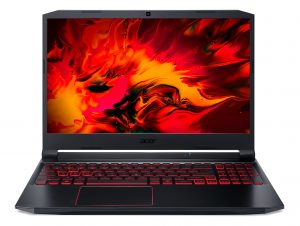
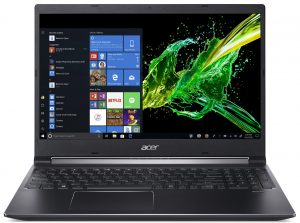

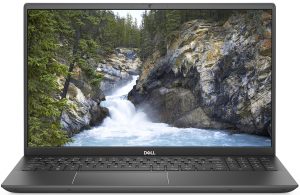
For every test like this, we use the same video in HD.




CPU options
Currently, this notebook can be purchased with either the Ryzen 5 5500U or the Ryzen 7 5700U – rebranded Zen 2 processors, part of the latest ULV lineup of AMD.
GPU options
As for the graphics, the Aspire 7 (A715-42G) version comes equipped with a GTX 1650 with 4GB of GDDR6 memory.
Gaming tests

Resolution: 1920 x 1080 (Full HD) |
MIN |
MED |
HIGH |
ULTRA |
|---|---|---|---|---|
| NVIDIA GeForce GTX 1650 (Laptop, 50W) | 70 FPS PLAY VIDEO | 39 FPS PLAY VIDEO | 21 FPS PLAY VIDEO | 10 FPS PLAY VIDEO |

Resolution: 1920 x 1080 (Full HD) |
MIN |
MED |
MAX |
|---|---|---|---|
| NVIDIA GeForce GTX 1650 (Laptop, 50W) | 149 FPS PLAY VIDEO | 108 FPS PLAY VIDEO | 77 FPS PLAY VIDEO |

Resolution: 1920 x 1080 (Full HD) |
NORMAL |
HIGH |
VERY HIGH |
MAX |
|---|---|---|---|---|
| NVIDIA GeForce GTX 1650 (Laptop, 50W) | 172 FPS PLAY VIDEO | 97 FPS PLAY VIDEO | 52 FPS PLAY VIDEO | 30 FPS PLAY VIDEO |

Resolution: 1920 x 1080 (Full HD) |
LOW |
MED |
HIGH |
ULTRA |
|---|---|---|---|---|
| NVIDIA GeForce GTX 1650 (Laptop, 50W) | 41 FPS | 33 FPS | 27 FPS | 23 FPS |

Resolution: 1920 x 1080 (Full HD) |
MIN |
MAX |
|---|---|---|
| NVIDIA GeForce GTX 1650 (Laptop, 50W) | 1321 FPS PLAY VIDEO | 101 FPS PLAY VIDEO |

Resolution: 1920 x 1080 (Full HD) |
LOW |
MED |
HIGH |
EPIC |
|---|---|---|---|---|
| NVIDIA GeForce GTX 1650 (Laptop, 50W) | 102 FPS PLAY VIDEO | 45 FPS PLAY VIDEO | 36 FPS PLAY VIDEO | 25 FPS PLAY VIDEO |

Resolution: 1920 x 1080 (Full HD) |
LOW |
MED |
EPIC |
|---|---|---|---|
| NVIDIA GeForce GTX 1650 (Laptop, 50W) | 75 FPS PLAY VIDEO | 58 FPS PLAY VIDEO | 52 FPS PLAY VIDEO |

Resolution: 1920 x 1080 (Full HD) |
VERY LOW |
MED |
MAX |
|---|---|---|---|
| NVIDIA GeForce GTX 1650 (Laptop, 50W) | 487 FPS PLAY VIDEO | 372 FPS PLAY VIDEO | 343 FPS PLAY VIDEO |

Resolution: 1920 x 1080 (Full HD) |
LOW |
NORMAL |
HIGH |
MAX |
|---|---|---|---|---|
| NVIDIA GeForce GTX 1650 (Laptop, 50W) | 166 FPS PLAY VIDEO | 134 FPS PLAY VIDEO | 125 FPS PLAY VIDEO | 106 FPS PLAY VIDEO |

Resolution: 1920 x 1080 (Full HD) |
MIN |
MED |
ULTRA |
|---|---|---|---|
| NVIDIA GeForce GTX 1650 (Laptop, 50W) | 615 FPS PLAY VIDEO | 172 FPS PLAY VIDEO | 86 FPS PLAY VIDEO |
Temperatures and comfort
Max CPU load
In this test we use 100% on the CPU cores, monitoring their frequencies and chip temperature. The first column shows a computer’s reaction to a short load (2-10 seconds), the second column simulates a serious task (between 15 and 30 seconds), and the third column is a good indicator of how good the laptop is for long loads such as video rendering.
Average core frequency (base frequency + X); CPU temp.
| AMD Ryzen 5 5500U (15W TDP) | 0:02 – 0:10 sec | 0:15 – 0:30 sec | 10:00 – 15:00 min |
|---|---|---|---|
| Acer Aspire 7 (A715-42G) | 3.18 GHz (B+51%) @ 62°C @ 36W | 3.16 GHz (B+50%) @ 65°C @ 35W | 2.88 GHz (B+37%) @ 62°C @ 25W |
| ASUS ZenBook 13 UM325 | 3.00 GHz (B+43%) @ 62°C @ 29W | 2.54 GHz (B+21%) @ 67°C @ 19W | 2.47 GHz (B+18%) @ 69°C @ 17W |
The fact that this laptop has a proper cooling solution, designed for a lot more power-hungry processors, shows that the only limiting factor for the Ryzen 5 5500U, in this case, is power. It is able to maintain a TDP of 25W, which is impressive for silicon of this size, and the clock speed is very close to 3.00 GHz. As far as the temperatures… well, 62°C after 15 minutes of stress testing is nothing short of spectacular.
Real-life gaming
| NVIDIA GeForce GTX 1650 | GPU frequency/ Core temp (after 2 min) | GPU frequency/ Core temp (after 30 min) |
|---|---|---|
| Acer Aspire 7 (A715-42G) | 1725 MHz @ 61°C | 1715 MHz @ 65°C |
| Lenovo Legion 5 (15) | 1659 MHz @ 58°C | 1671 MHz @ 56°C |
| Acer Nitro 5 (AN517-52) | 1746 MHz @ 65°C | 1723 MHz @ 71°C |
| Dell Inspiron 15 7590 | 1395 MHz @ 80°C | 1395 MHz @ 84°C |
| Acer Aspire 7 (A715-74G) | 1552 MHz @ 70°C | 1532 MHz @ 76°C |
| Dell G3 15 3590 | 1605 MHz @ 67°C | 1566 MHz @ 74°C |
| ASUS ROG G531 | 1461 MHz @ 65°C | 1408 MHz @ 71°C |
| ASUS TUF FX705 | 1566 MHz @ 74°C | 1568 MHz @ 74°C |
| Acer Nitro 7 (AN715-51) | 1633 MHz @ 61°C | 1599 MHz @ 67°C |
With a TGP of 50W, the GTX 1650 inside of this notebook was able to perform as expected, while the temperatures it was running at were pretty low.
Gaming comfort
Interestingly, even during gaming, the fan noise levels were not too high. And although the 44°C+ temperature on the keyboard may seem a lot, it is within what can be considered as reasonable.
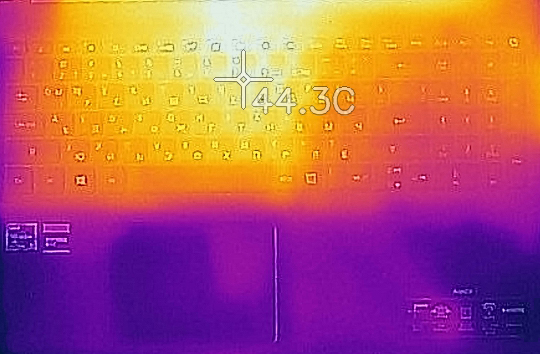
Verdict
Before we start, we have to consider the price tag of this notebook. We would like to give credit to Acer for giving their best to keep the costs down, while not really sacrificing the quality of their product. Yes, you won’t find Thunderbolt connectivity here, and unfortunately, there is no SD card slot of any sort. Also, the materials of the build are predominantly plastic, but this doesn’t mean that the laptop feels cheap.
In fact, it is pretty solid, with the chassis being able to withstand a good amount of physical stress. But enough about the design, which you can see by yourself. The true hero here is the processor. Although Acer has gone for a low-voltage solution, it handles perfectly, thanks to the potent cooling solution, borrowed from the older gamer-centric Nitro 5 series (and ultimately the Aspire 7 from last year). Actually, we have never been expecting anything but greatness from the Ryzen 5 5500U (in our case), but what we were more surprised of, was the fact that it manages to drag the GTX 1650 at the same pace, as the 45W Ryzen 5 4600H does. Moreover, the low TDP of the ULV CPUs, actually results in significantly lower noise levels, as the laptop is practically silent during day-to-day use.
Acer Aspire 7 (A715-42G)’s IPS panel (AUO B156HAN02.1 (AUODF87)) has a Full HD resolution, comfortable viewing angles, good contrast ratio, and a non-flickering backlight. On the other hand, the narrow color coverage reveals the budget nature of the display, which can’t really be used for professional work.
Additionally, the battery life is solid with 12 hours and a half of Web browsing, and 9 hours and 15 minutes of video playback. This, combined with the dual SODIMM slots for memory upgrades, makes it a comfortable performer, even for the near future. Well, yes, there is only one storage option here, but at least it supports fast M.2 PCIe x4 drives.
So, if you were troubled by the fact that the CPU might be inferior to the Intel iteration, due to its lower TDP, worry no more, as the Ryzen 5 5500U is now a more viable option than the Core i5-10300H.
Pros
- Great cooling, which provides more performance than we expected
- Wi-Fi 6 + 2x SODIMM slots
- Good battery life
- PWM-free display (AUO B156HAN02.1 (AUODF87))
- Adequate pricing
Cons
- No Thunderbolt connection or SD card reader
- Covers only 51% of the sRGB color gamut (AUO B156HAN02.1 (AUODF87))
- All-plastic build (although it doesn’t feel cheap)
You can check the prices and configurations in our Specs System: https://laptopmedia.com/series/acer-aspire-7-a715-42g/
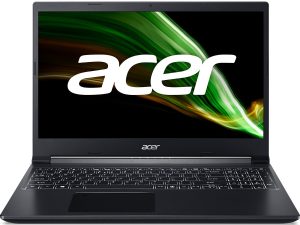


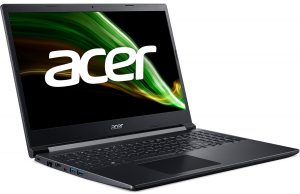

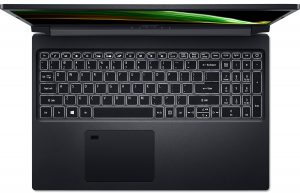
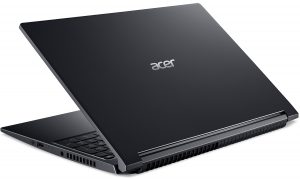

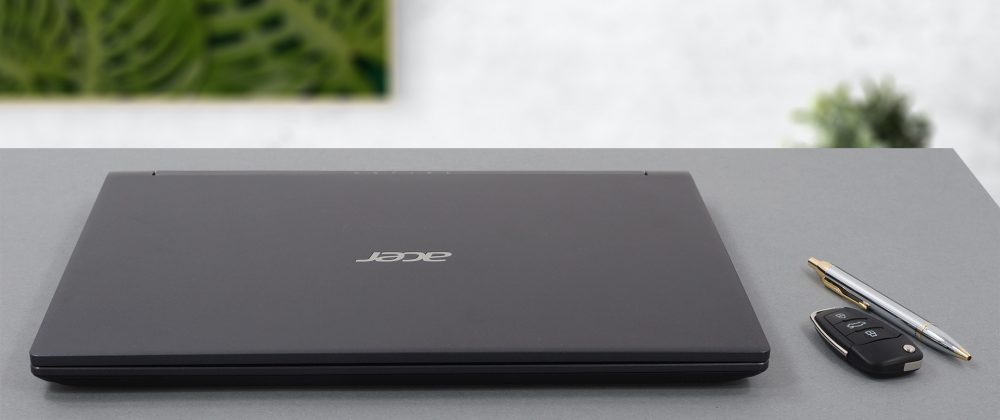


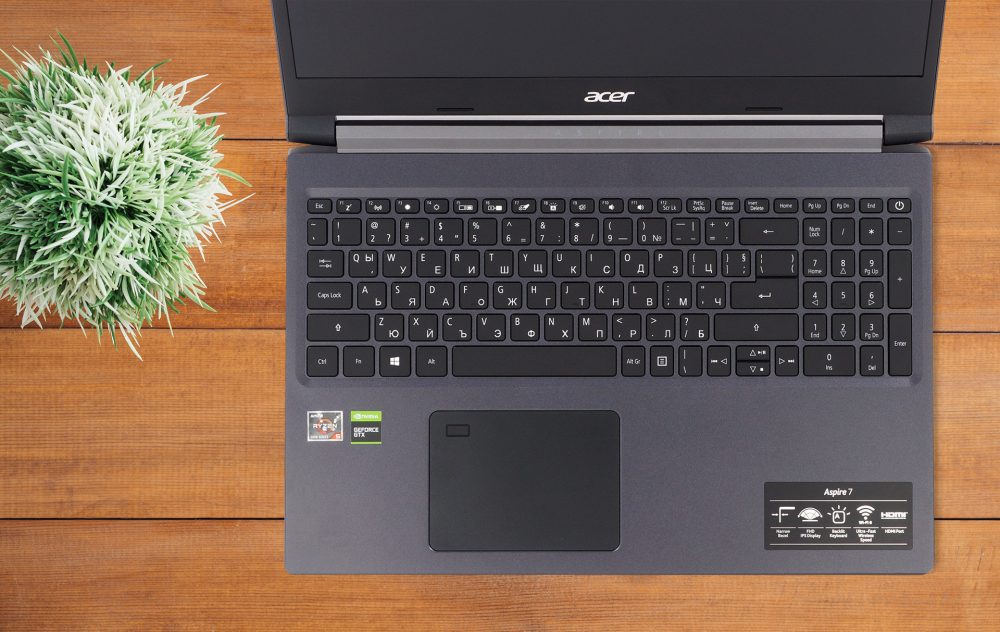



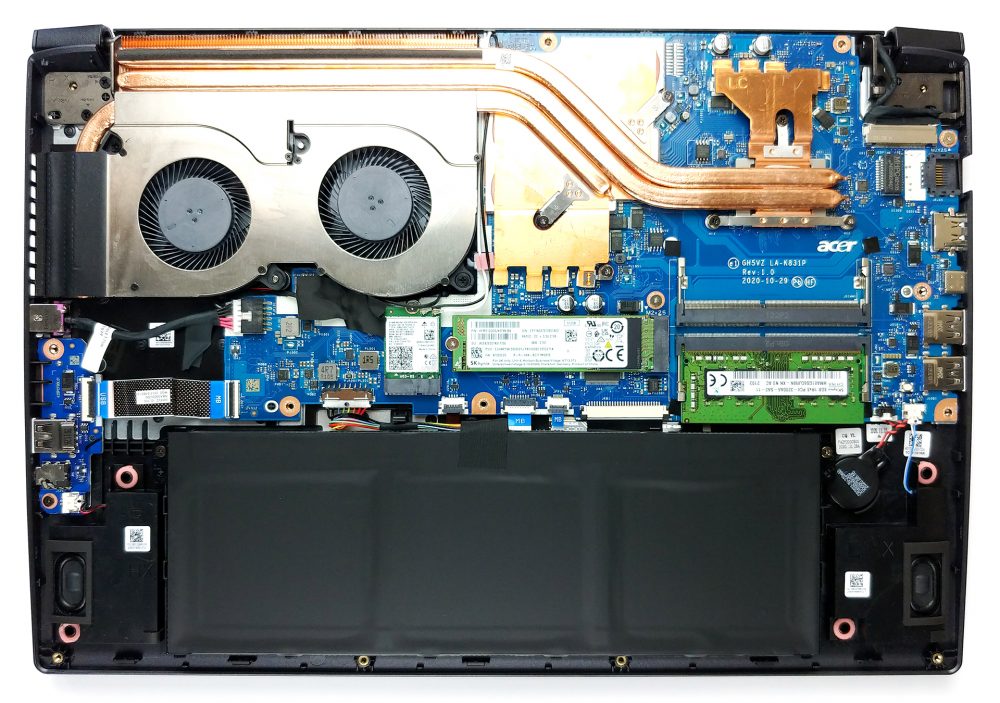
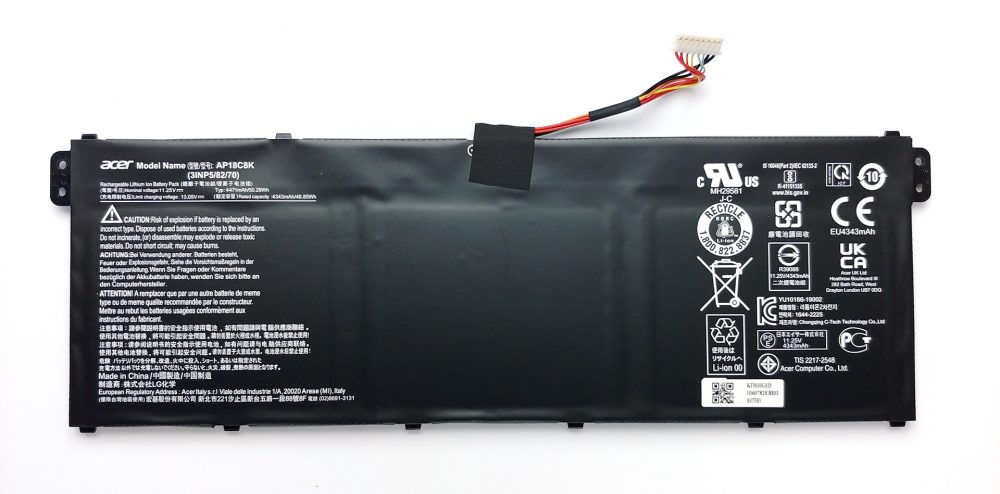
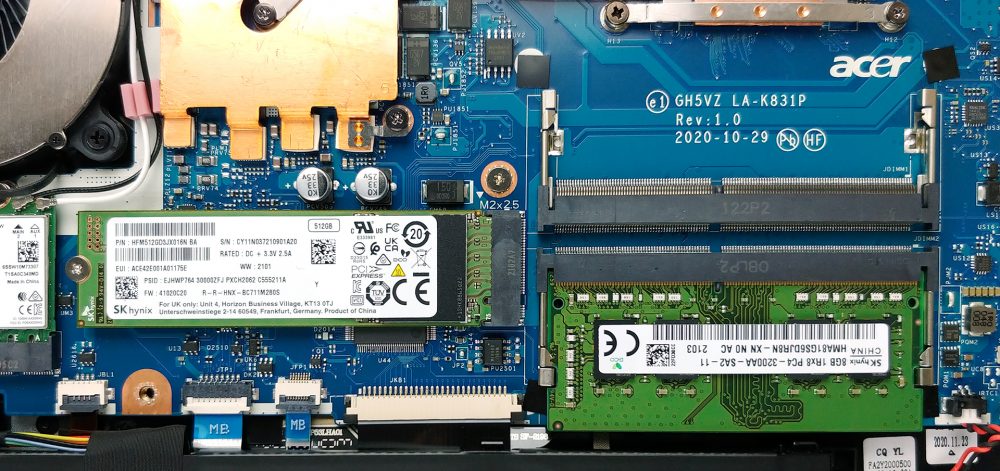
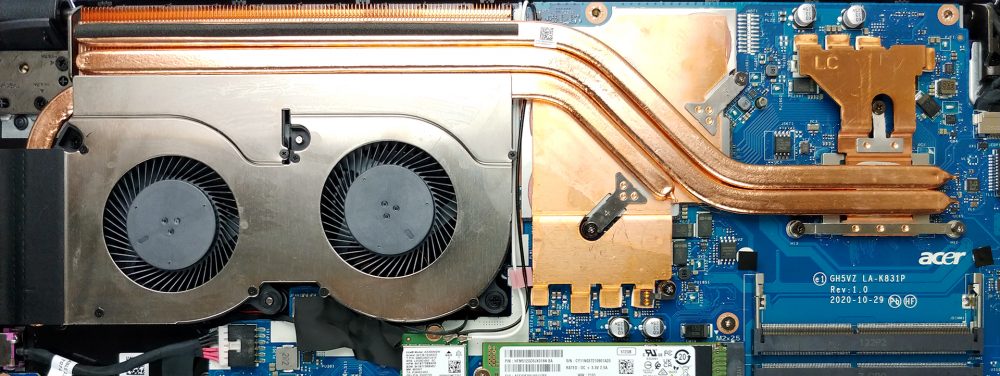
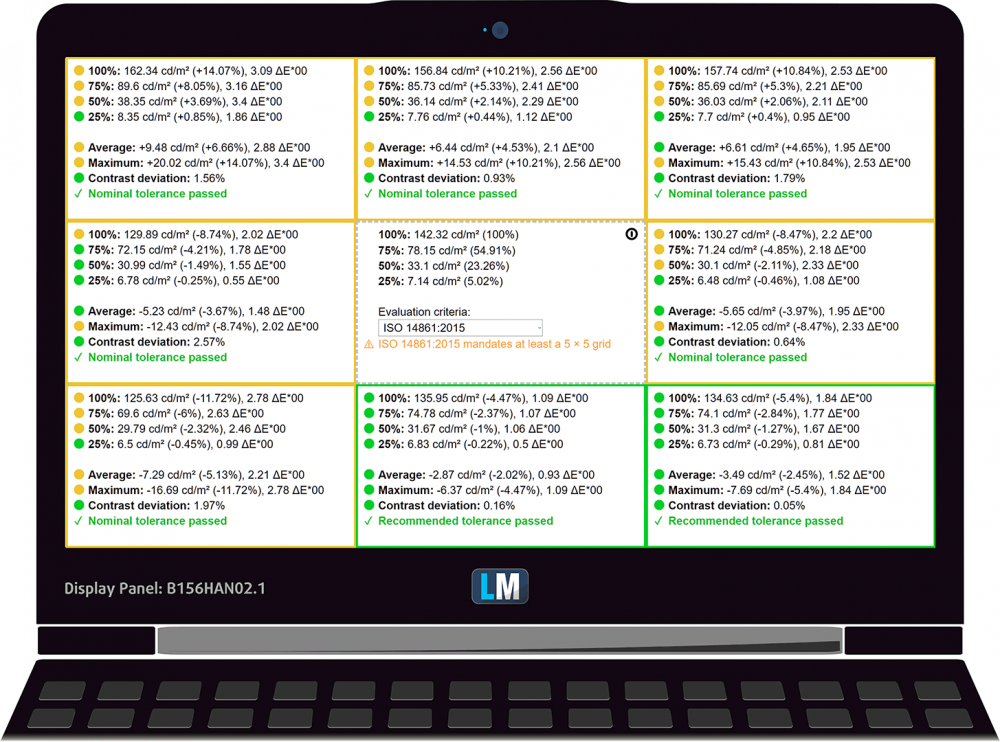

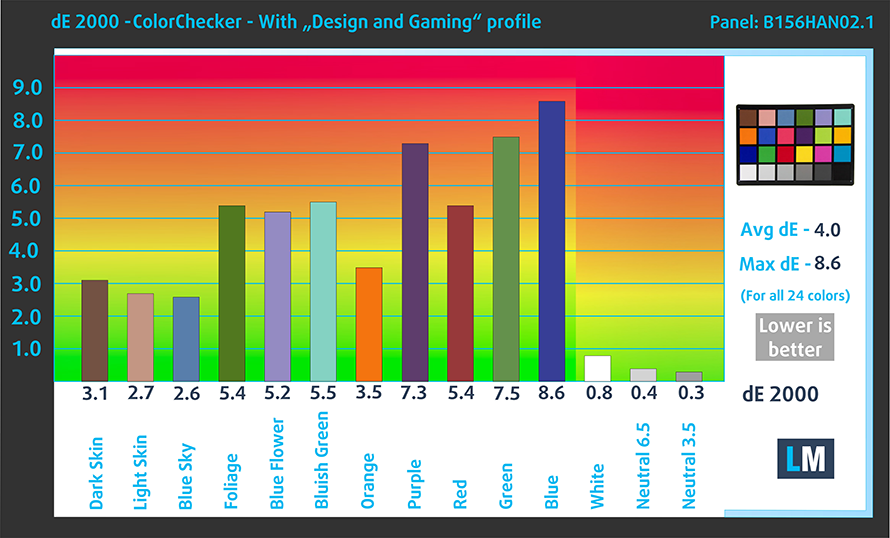

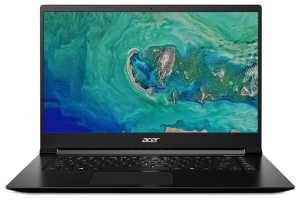
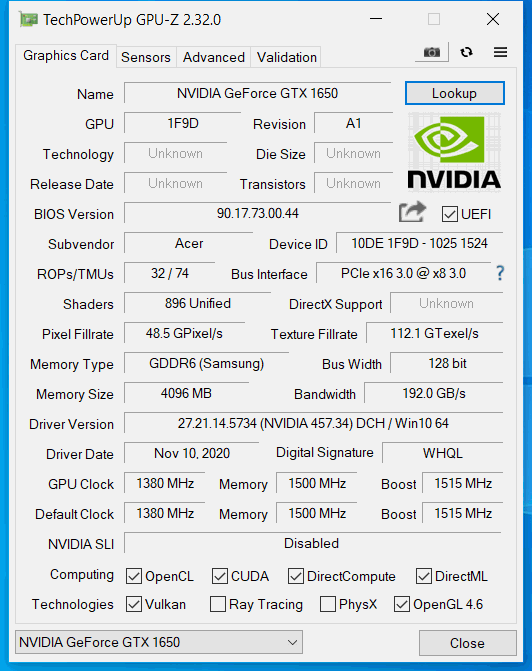








this is the most popular desktop setup. 250usd cpu+150usd gpu. surprisingly, for laptop oem manufacturers this is the rariest one in not “200w ugly looking leaf bowler” category.
destroyed by the horrific screen. btw aspire SEVEN, not three or five.
also, some of your criteria continue to bother me.
-no pwm(or high pwm or pwm for the low brightness people would never use) is the most common. if something is the same for 90% of the devices it cant be neither plus nor minus.
-250 nits is bad
-plastic and no thunderbolt is just what this 1k gaming segment is